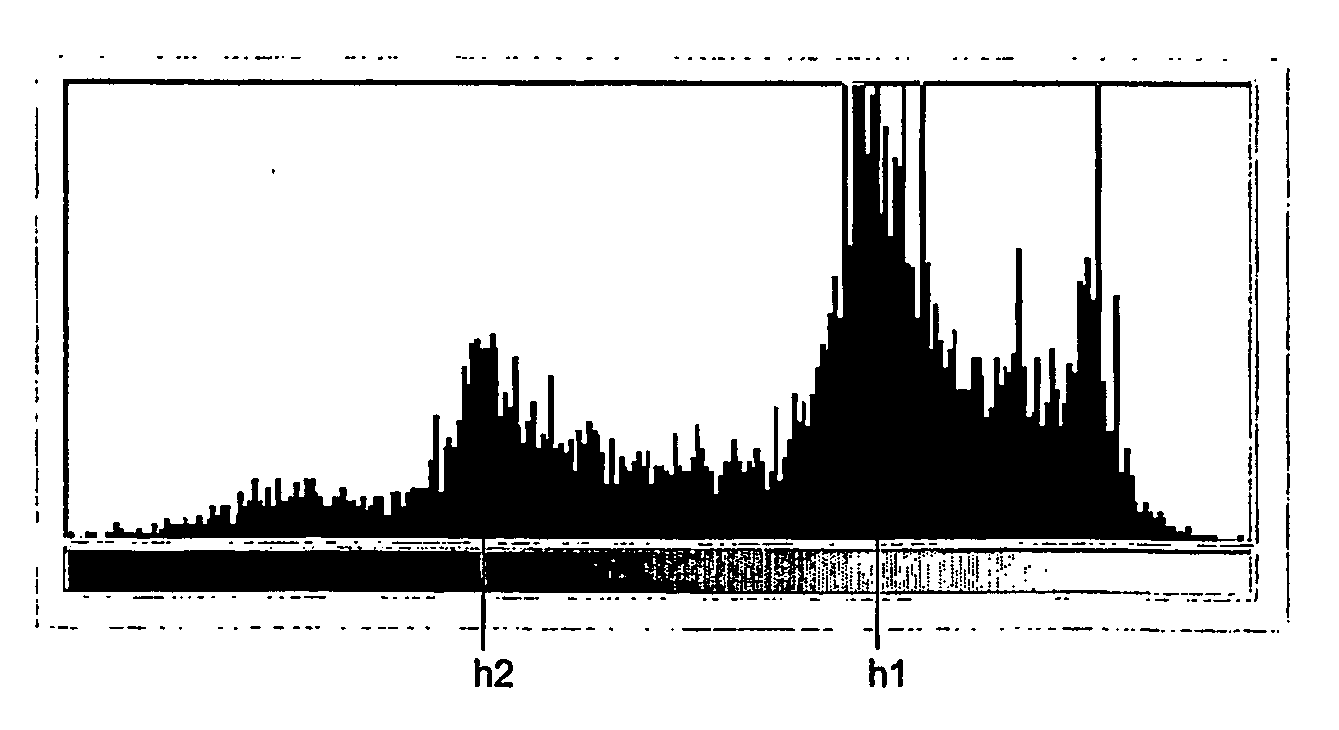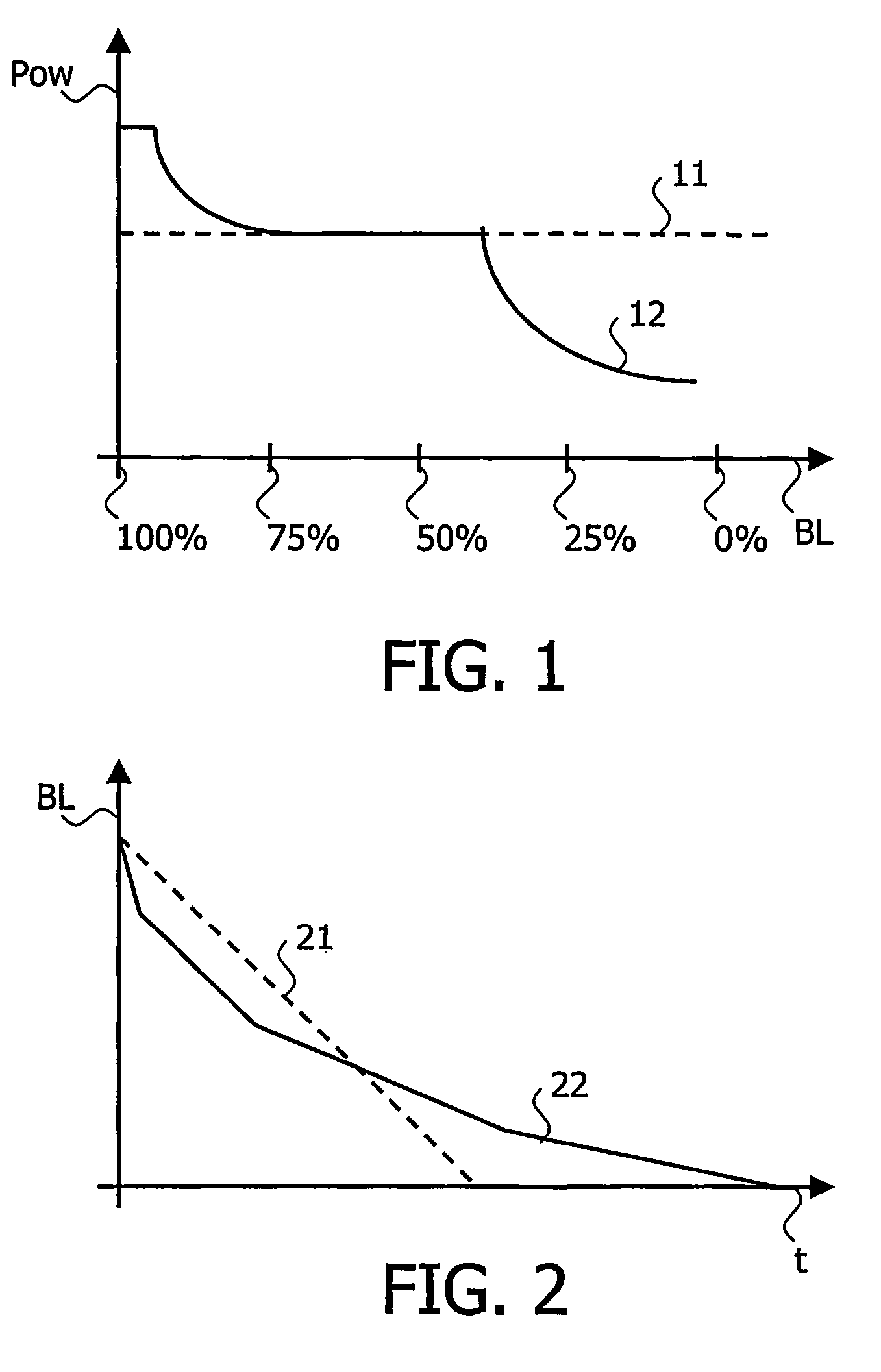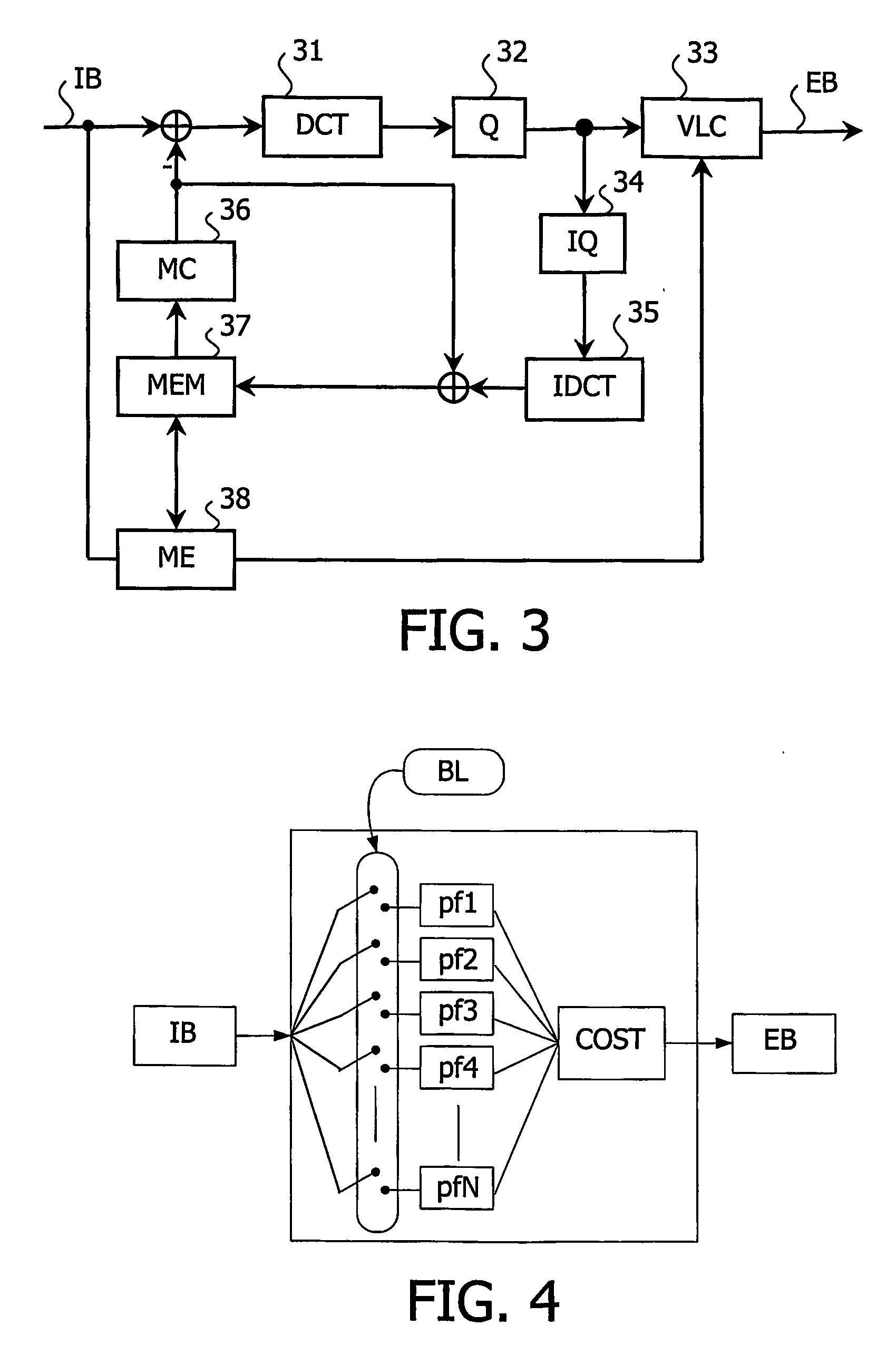Method of video coding for handheld apparatus
a handheld apparatus and video data technology, applied in the field of video data coding for handheld apparatuses, can solve the problems of significant cooling effort attenuation and increase in reliability, and achieve the effect of reducing power consumption and maintaining competitive compression efficiency
- Summary
- Abstract
- Description
- Claims
- Application Information
AI Technical Summary
Benefits of technology
Problems solved by technology
Method used
Image
Examples
Embodiment Construction
[0026] The present invention relates to a method for adapting the power consumption of a video codec (for coder-decoder) to a current battery level. Said method is intended for handheld devices such as mobile phones or Personal Digital Assistants.
[0027] It relates, more especially, to H.264 coded sequences but it will be apparent to a person skilled in the art that said method stays also applicable to any type of video sequences coded with a predictive block-based technique such as, for example, those provided by MPEG-1, MPEG-2, MEGA-4, H-261 or H-263 standards.
[0028] The invention is based on the following principle. If the battery is full or near full, the video codec in accordance with the invention is adapted to be more power consuming, yielding to an improved video quality compared to a non-adaptive classical low power method. If the battery is in a medium state, the behavior is substantially equivalent to the non-adaptive classical low power method. If the battery is empty o...
PUM
 Login to View More
Login to View More Abstract
Description
Claims
Application Information
 Login to View More
Login to View More - R&D
- Intellectual Property
- Life Sciences
- Materials
- Tech Scout
- Unparalleled Data Quality
- Higher Quality Content
- 60% Fewer Hallucinations
Browse by: Latest US Patents, China's latest patents, Technical Efficacy Thesaurus, Application Domain, Technology Topic, Popular Technical Reports.
© 2025 PatSnap. All rights reserved.Legal|Privacy policy|Modern Slavery Act Transparency Statement|Sitemap|About US| Contact US: help@patsnap.com



